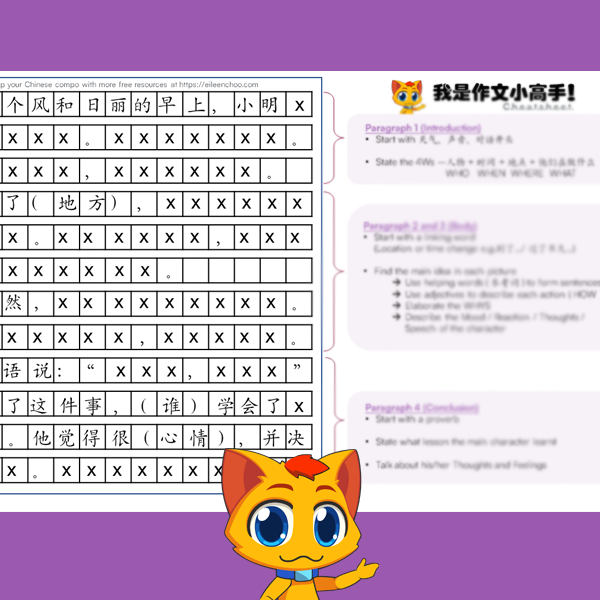What’s tested in the PSLE Higher Chinese paper?
Just like in Primary 5, there are 2 parts to Primary 6 PSLE Higher Chinese exam.
The first part, or Higher Chinese Paper 1, consists of composition writing, which takes up 40% of the total score for the entire Chinese exam.
Students are expected to choose between situational writing and continuous writing. Since both physical dictionaries and electronic dictionaries are allowed for this section, don’t forget to arm yourself with one and make sure that it’s MOE-approved.
Moving on to the second part, or Higher Chinese Paper 2, it is the written paper where students will be tested on their vocabulary, grammar, reading, and comprehension skills.
This section accounts for 60% of the entire exam. Unlike Paper 1, there are no multiple-choice questions; only open-ended ones. Moreover, no Chinese dictionary is allowed.
Now let’s look at the Higher Chinese primary school grading system.
Higher Chinese PSLE grading
Unlike the usual PSLE grading system where achievement levels are used to score a student’s proficiency from AL1 to AL8, the Higher Chinese PSLE grading system only consists of 4 grades – distinction (DI), merit (ME), pass (PA), and ungraded (UG).
Distinction is the highest score you can get at PSLE, requiring a score from 80 to 100. To attain a merit grade, a student needs to score between 65 and 79. Scoring a distinction or merit is considered a good PSLE score for Higher Chinese, and most students are able to achieve that.
A mark range of 50 to 64 constitutes a pass, while anything under 50 will be considered as ungraded.
Need help preparing for PSLE Higher Chinese?
Here’s a suggested game plan to help you with your goals:
Whether you are looking to pass your Higher Chinese exam or score a good grade, here’s my winning formula for my school kids.
- Aim to get at least 30 marks for your composition
- Get at least 40 marks for paper 2
Combining these scores will already give you 70 marks, enough to earn a merit for Higher Chinese. You can adjust this formula according to your strengths and weaknesses.
What about scoring for normal Chinese (standard Chinese)? Be sure to check out this post for more tips on that!







